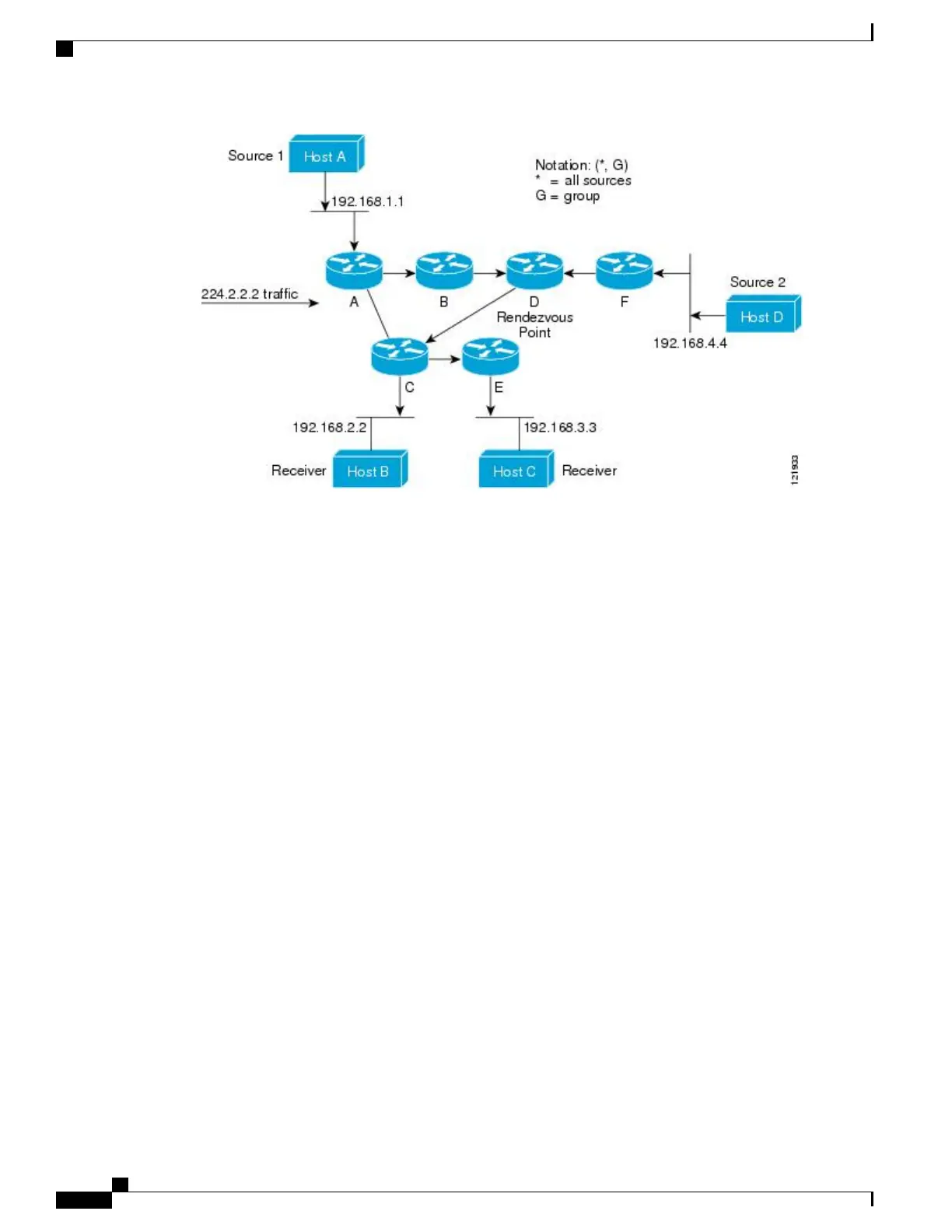In this example, multicast traffic from the sources, Hosts A and D, travels to the root (Router D) and then
down the shared tree to the two receivers, Hosts B and C. Because all sources in the multicast group use a
common shared tree, a wildcard notation written as (*, G), pronounced “star comma G,” represents the tree.
In this case, * means all sources, and G represents the multicast group. Therefore, the shared tree shown in
Multicast Distribution Shared Tree would be written as (*, 224.2.2.2).
Both source trees and shared trees are loop-free. Messages are replicated only where the tree branches. Members
of multicast groups can join or leave at any time; therefore the distribution trees must be dynamically updated.
When all the active receivers on a particular branch stop requesting the traffic for a particular multicast group,
the routers prune that branch from the distribution tree and stop forwarding traffic down that branch. If one
receiver on that branch becomes active and requests the multicast traffic, the router will dynamically modify
the distribution tree and start forwarding traffic again.
Source Tree Advantage
Source trees have the advantage of creating the optimal path between the source and the receivers. This
advantage guarantees the minimum amount of network latency for forwarding multicast traffic. However,
this optimization comes at a cost. The routers must maintain path information for each source. In a network
that has thousands of sources and thousands of groups, this overhead can quickly become a resource issue on
the routers. Memory consumption from the size of the multicast routing table is a factor that network designers
must take into consideration.
Shared Tree Advantage
Shared trees have the advantage of requiring the minimum amount of state in each router. This advantage
lowers the overall memory requirements for a network that only allows shared trees. The disadvantage of
shared trees is that under certain circumstances the paths between the source and receivers might not be the
optimal paths, which might introduce some latency in packet delivery. For example, in the figure above the
shortest path between Host A (source 1) and Host B (a receiver) would be Router A and Router C. Because
we are using Router D as the root for a shared tree, the traffic must traverse Routers A, B, D and then C.
IP Multicast Routing Configuration Guide, Cisco IOS XE Release 3.6E (Catalyst 3850 Switches)
136 OL-32598-01
Configuring PIM
Multicast Forwarding

